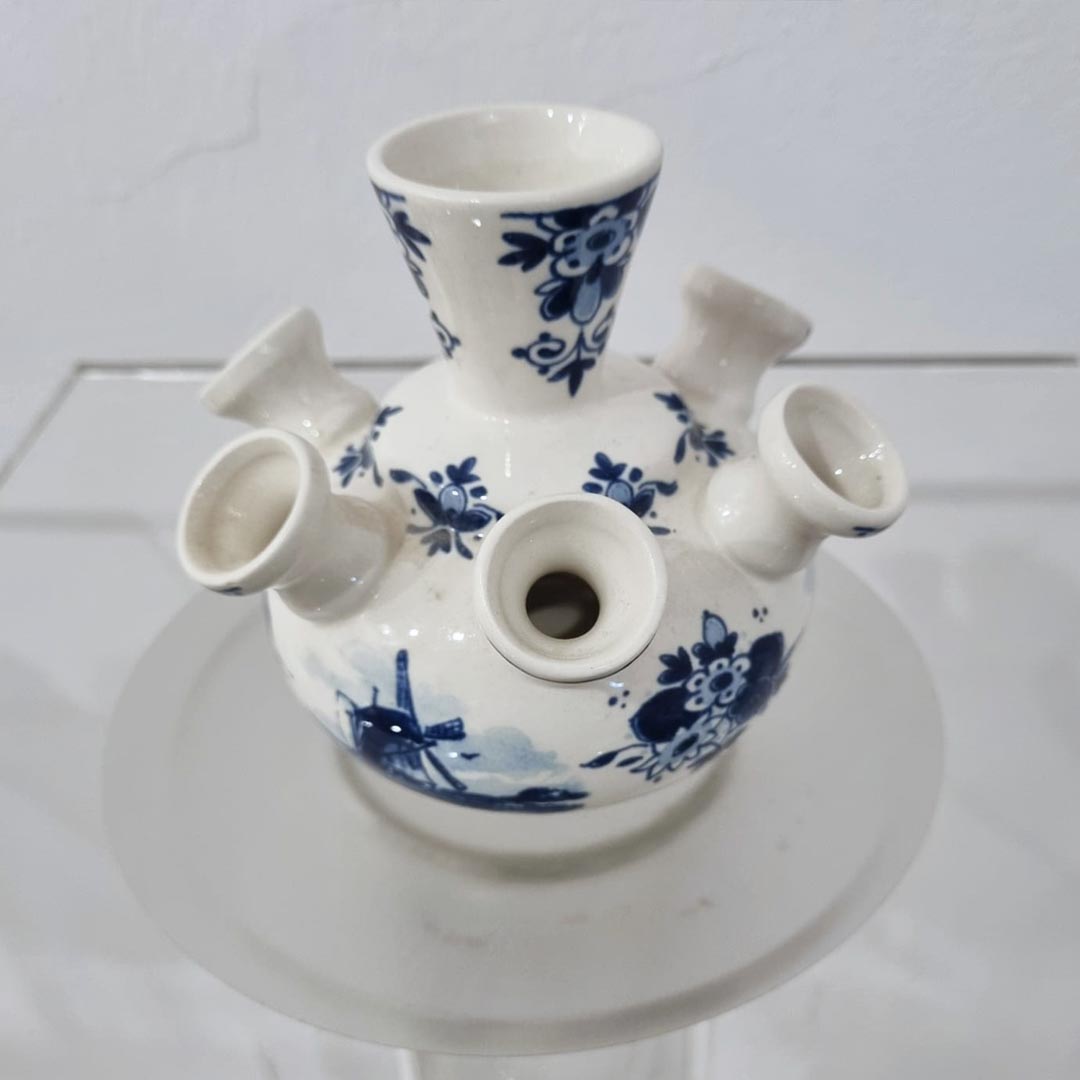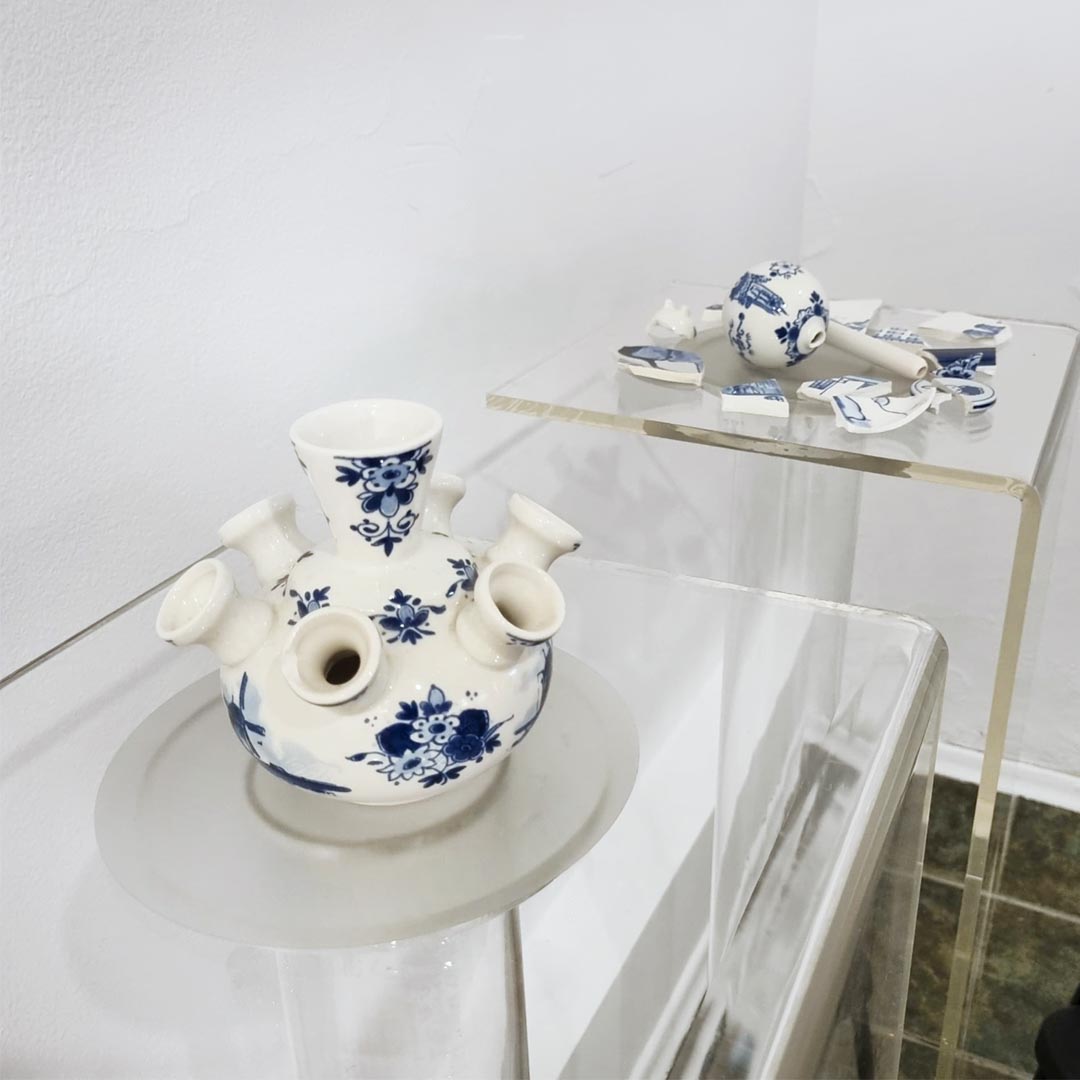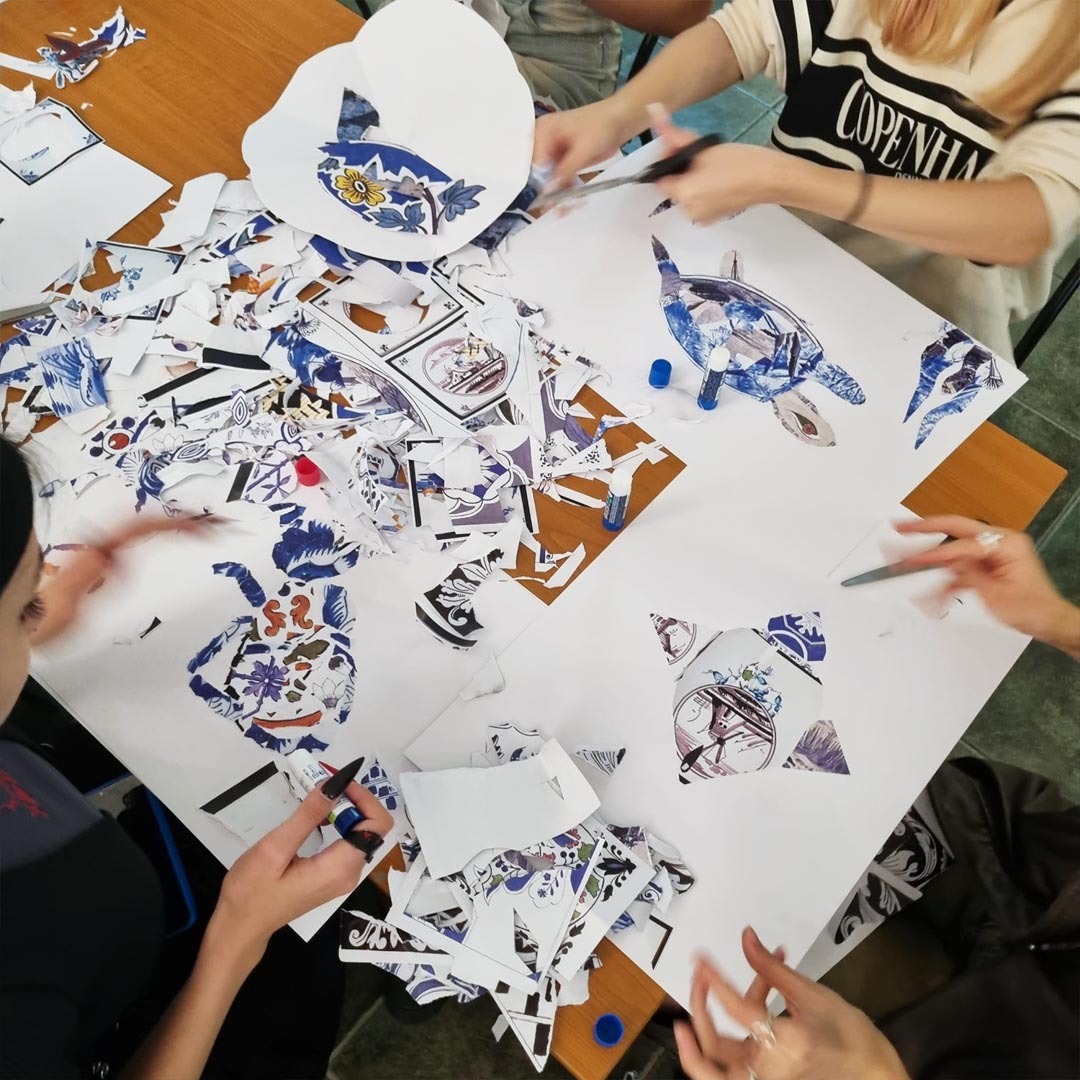RESURRECTION
sustainable art
project
Resurrectionis a project born from the belief that art has the power to bridge the past,
present, and future, uniting people across cultures and generations. This
project is created using broken fragments of handmade pottery, each piece
representing centuries-old crafts and timeless human knowledge. By reimagining
these fragments, Resurrection transforms them into a new mosaic
composition, aptly titled New Horizons, as a symbol of hope and rebirth.
The project captures the beauty of our shared history, repositions the symbols
and ornaments of different cultures, and, in doing so, gives these ancient
designs a new purpose and meaning. Each artwork in Resurrection serves
as a visual reminder of the potential for renewal and the importance of
sustainable action as we build our collective future.






A Cross-Cultural Journey in Ceramic Craft
Resurrection incorporates pottery from two distinct traditions: Bulgaria and the Netherlands, blending elements from both cultures to celebrate a shared legacy of craftsmanship.
Bulgaria: Pottery from the contemporary Art.E studio in Sofia contributes a uniquely Bulgarian voice to the project. Founded by Stoyko Anguelov and Ivan Subchev, Art.E has championed the country’s ceramic artistry tradition since 2010, incorporating the centuries-old techniques and styles into refined porcelain craftsmanship that speaks to Bulgaria’s rich heritage.
Netherlands: The Dutch influence shines through iconic Delftware, celebrated for its blue-and-white tin-glazed artistry. Originally inspired by Chinese porcelain, Delftware evolved during the 17th and 18th centuries to include European motifs and local scenes, telling stories of Dutch life and culture. These timeless designs remain cherished for their historical and aesthetic value, making them a fitting counterpart in this celebration of cultural legacy and resilience.



Pottery: A Symbol of Our Shared Humanity
For centuries, pottery has been a universal craft. The broken pieces in Resurrection represent both the brokenness of the world and the potential for healing. Through this reassembly, the artwork becomes a symbol of resilience, reminding us of our interconnectedness and shared human heritage. At the same time, it calls for sustainability, urging us to consider how we might honor this inheritance by creating a world that future generations can also cherish. The rebirth of these fragments underscores the importance of finding sustainable ways of living that respect our environment and safeguard our collective future.



Sustainability: A Path to Renewal
In this period of transition, Resurrection reminds us that sustainability is a conscious commitment to the future. Each artwork emphasizes the need to reshape our present practices, finding ways to meet our needs without compromising the well-being of future generations. Sustainability is about creating a world where both human creativity and the planet’s resources can thrive, in harmony.




Inspiring Action for a Better Future
With Resurrection, Valentin Bakardjiev encourages people to envision a better future and to take active steps toward protecting our planet. The mosaics serve as a reminder of our interconnectedness and the power of art to inspire change. Bakardjiev’s hope is that each viewer will be moved to contribute to a sustainable future—one that values our past, respects our present, and builds a hopeful future for all. Through these artworks, Resurrection invites viewers to participate in the journey of transformation, sparking conversations on unity, heritage, and sustainable action.








Workshops: Continuing the Legacy of Transformation and Hope
The Resurrection workshops engage diverse groups in themes of transformation, sustainability, and reinvention. Held alongside the exhibition, these workshops extend the project’s mission by involving children, students, and prisoners. Participants include students from New Bulgarian University, Ukrainian children living in Bulgaria organized by the Ukrainian Club of writer Victoria Filina, children from the 7th School “Seven Saints” in Sofia, and inmates at Stara Zagora Prison.




Each workshop aims to carry the exhibition’s message beyond the museum walls, using art to inspire new generations and individuals in challenging situations. By working with broken pottery, participants learn to find beauty and potential in what is broken or discarded. For children, it offers a chance to imagine new futures; for students, an exploration of how the past shapes the present; and for prisoners, an opportunity to reflect on resilience and rebuilding.




The workshops are designed to bring Resurrectionto new communities, transforming its message into action and symbolically reshaping fragments of life into hopeful narratives. Select artworks from the workshops are now part of the exhibition, forging a dynamic connection between creators and viewers. We welcome other schools, universities, and community centers to join this inspiring journey.




art bakard
